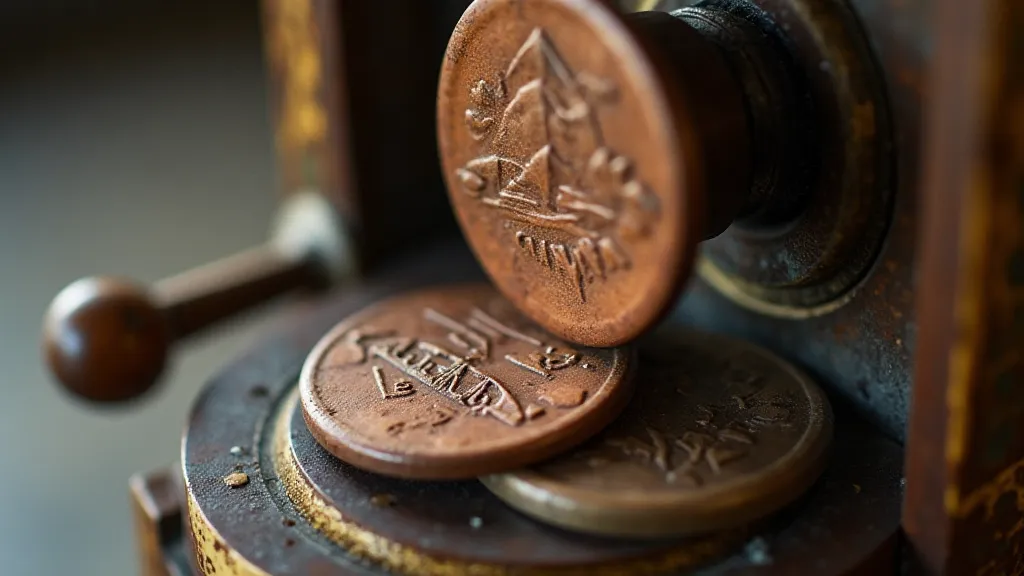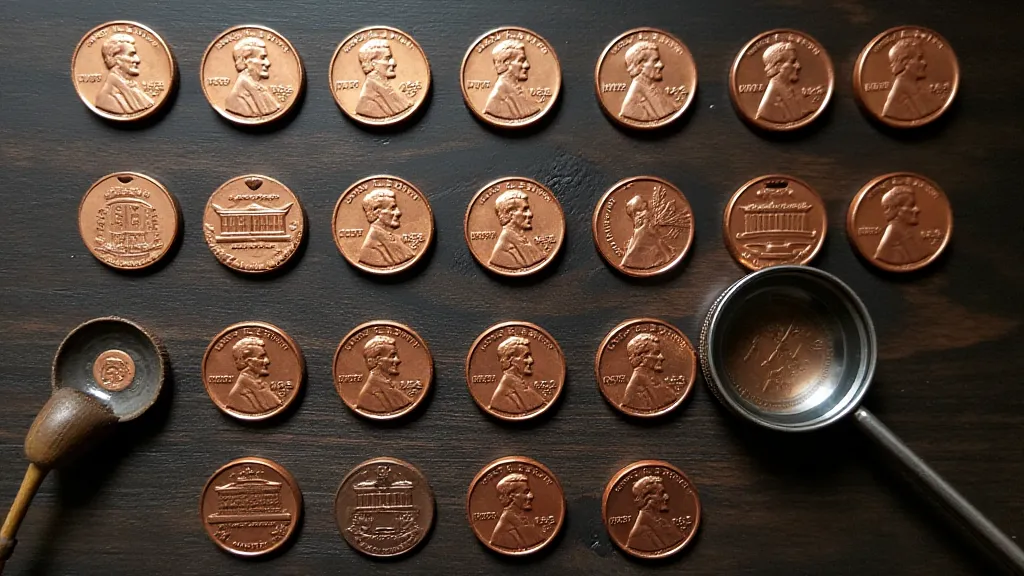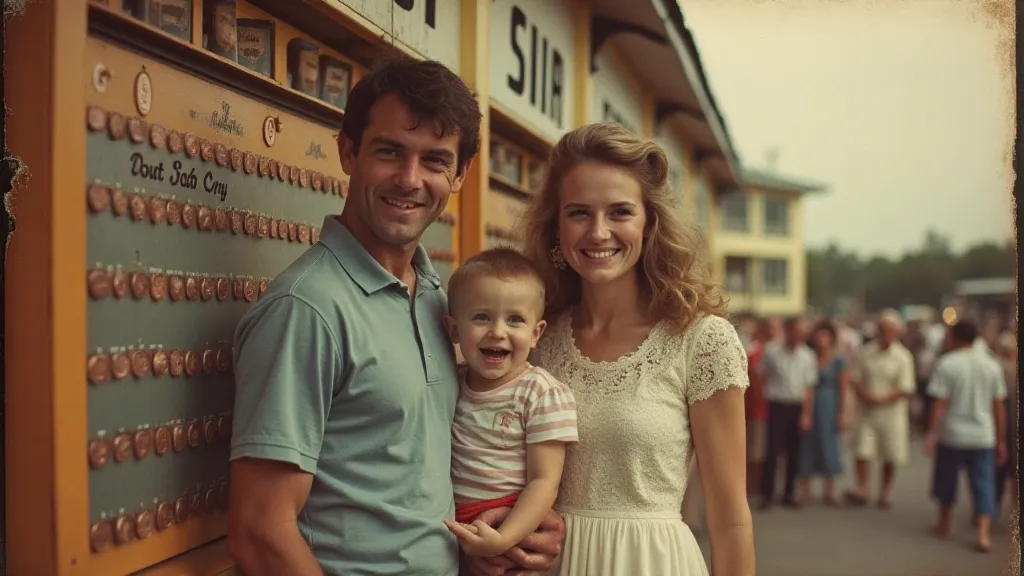The Collector's Labyrinth: Navigating the Value of Rare Pressed Pennies
There’s a peculiar magic woven into pressed pennies. It’s not the glint of gold, nor the grandeur of a sovereign, but something far more intimate – a tangible memory, a fleeting moment preserved within the metallic embrace of a Lincoln cent. My own fascination began, not with the coins themselves, but with my grandfather. He wasn’t a “collector” in the formal sense; he was a repository of experiences. He carried a small, worn leather pouch, and occasionally, he’s let me rummage through it. Amongst the faded photographs and ticket stubs were pressed pennies, each a souvenir from a family vacation – Yellowstone, the Alamo, a long-forgotten amusement park. They weren’t valuable, not in the way a rare coin might be, but they held a value that transcended price: they were portals to a past I could only imagine.
The world of pressed penny collecting, as I've come to discover, is more complex than initially meets the eye. It’s a delightful labyrinth, leading down paths of history, artistry, and a surprising degree of scarcity. Understanding the value of a pressed penny isn't simply about recognizing a desirable design; it's about unraveling a story, a confluence of factors that make one penny more precious than another.

A Brief History: From Souvenirs to Scarcity
The practice of pressing coins, initially using hand-cranked machines, emerged in the late 19th century, primarily as tourist souvenirs. Think of them as the precursors to modern postcards and keychains – tangible reminders of a journey. Early presses were often simple, featuring basic designs reflecting the location – a landmark, a state seal, or the name of the establishment offering the souvenir. The popularity boomed with the rise of roadside attractions and amusement parks in the early to mid-20th century. These early presses and designs are inherently more valuable due to their age and relative scarcity. The process itself tells a story – a visual representation of a moment in time and a tangible connection to a place. The appeal lies in more than just the coin; it's the history embedded within it, waiting to be rediscovered. Sometimes, you feel like you are holding a piece of Americana in your hand, a tiny window into the past.
The industry evolved with the introduction of electric presses in the 1950s and 60s, allowing for more elaborate designs and wider distribution. However, this also led to a saturation of common designs. The introduction of the bicentennial designs (1975-1976) brought another wave of popularity, followed by a lull until the 1990s, when the hobby experienced a resurgence driven by online communities and renewed interest in collecting. You can almost picture families gathered around these machines, creating memories that would last a lifetime. And many of those memories are now preserved, not just in photographs, but also in these small, pressed coins. It's a fascinating glimpse into the American experience, and it’s a hobby that continues to draw enthusiasts from around the globe.
Factors Influencing Value: More Than Just the Design
Determining the value of a pressed penny isn't a straightforward exercise. Several factors intertwine, creating a complex ecosystem of supply and demand. Here are some key elements to consider:
- Rarity of the Design: This is arguably the most significant factor. Designs unique to a single location, especially those associated with businesses that have since closed, are inherently more valuable. Some designs were only available for a short period, making them exceptionally scarce.
- Condition: As with any collectible, condition matters. A sharply pressed penny, free from scratches, creases, or corrosion, will command a higher price than one that's been mishandled. "Full Strike" is a key term – referring to a clear and crisp impression of the design.
- Year of the Cent: The host coin itself plays a role. A pressed penny utilizing a 1955-D Lincoln cent, for example, is generally more valuable than one using a more common year.
- Origin/Location: A pressed penny from a business that no longer exists, or a location that is historically significant, will often be sought after.
- Die Varieties: This is where things get truly fascinating (and potentially complex). Die varieties are subtle variations in the design caused by imperfections or adjustments made to the pressing die. These are often extremely rare and can significantly increase a penny’s value. Identifying these requires a trained eye and a keen understanding of the manufacturing process.

Delving Deeper: The Stories Behind the Pennies
Beyond the technical aspects of die varieties and full strikes, lies a deeper appreciation for the narratives woven into these small tokens. A pressed penny isn't just a piece of metal; it’s a time capsule, a tangible link to a specific moment and place. Consider the effort involved – the craftsman operating the press, the family on vacation, the business owner eager to provide a unique souvenir. Each penny holds a story, and those stories are what truly elevate their value. Learning to appreciate those stories is crucial to understanding the heart of pressed penny collecting. And that journey of discovery mirrors the feeling of uncovering hidden treasures - each penny offering a new clue to a larger narrative. If you're eager to explore the rich history of these tokens, consider reading about The Pressed Penny Palimpsest: Layers of History in a Single Coin, which further examines the layers of history held within these collectible coins.
Authentication and Responsible Collecting
The world of collectibles isn't always honest. Counterfeit pressed pennies do exist, though they are generally easy to spot with a trained eye. Look for inconsistencies in the design, poorly defined details, or unusual metal characteristics. Compare the penny to known examples and consult with experienced collectors if you’re unsure. Responsible collecting goes beyond acquiring rare items; it's about preserving the history they represent. Treat your collection with care, store it in a clean and dry environment, and avoid harsh cleaning methods that can damage the delicate impressions. Think of it as stewardship - passing down a piece of history for future generations to appreciate.
The Emotional Value: More Than Just Dollars and Cents
Ultimately, the value of a pressed penny extends far beyond its monetary worth. It’s about the story it tells, the memories it evokes, and the connection it provides to the past. I remember the smile on my grandfather's face as he explained the significance of a pressed penny from a forgotten amusement park - a place where he’s shared laughter and joy with his family. It wasn't just a souvenir; it was a portal to a cherished memory. The fleeting nature of these souvenirs adds to their allure. They are tangible reminders of experiences that might otherwise fade with time. It’s a poignant connection to the past, preserved within a small circle of metal.
Collecting pressed pennies, for me, is about more than simply accumulating objects; it’s about curating a tangible record of history and preserving a unique piece of Americana. Just like the antique accordions my aunt collects, each pressed penny has its own story to tell, waiting to be rediscovered. It's a hobby that invites exploration, sparks curiosity, and connects us to the shared experiences of generations past. It's a journey into the heart of American nostalgia. The true value, you see, lies not in the price tag, but in the journey of discovery itself. Consider reading Ephemeral Echoes: The Pressed Penny as a Time Capsule to learn more about how pressed pennies encapsulate moments in time.

Further Exploration
This guide provides a foundational understanding of the world of pressed penny collecting. To delve deeper, consider joining online forums and communities dedicated to the hobby, attending coin shows, and connecting with experienced collectors. The labyrinth awaits, filled with hidden treasures and fascinating stories just waiting to be uncovered. For those seeking a more in-depth look at the early processes used in pressing pennies, you might find Echoes in Bronze: The Lost Art of Hand-Pressed Pennies particularly enlightening. It delves into the techniques and artistry behind the early, hand-operated presses, providing a deeper appreciation for the craftsmanship involved.





